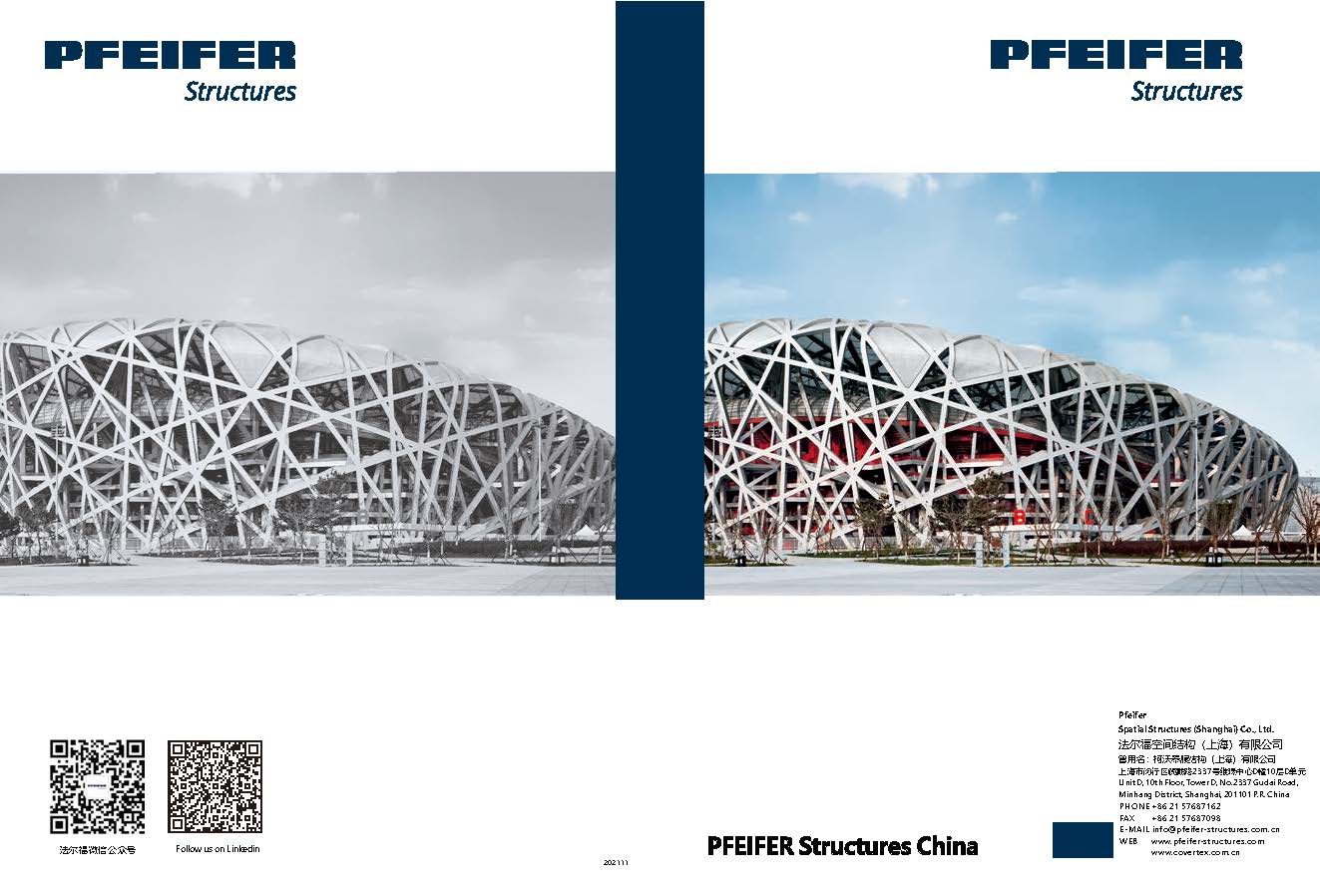ETFE
ETFE (Ethylene tetrafluoroethylene) is a lightweight material that is a superb alternative to glass. It is a popular choice for applications where high light and UV transmission are required, such as:
- Large-span roofing
- Skylights
- Facades
ETFE foil demands less structural steel support than traditional glazed systems, resulting in an easier installation, and typically a lower cost alternative. It is often considered a value-engineered option over glass roofing.
ETFE foil roofs can be supplied as a single layer membrane supported by a cable net system or as a series of pneumatic cushions made up of between two and five layers of ETFE.
ETFE Foil is a plastic polymer related to Teflon and is created by taking the polymer resin and extruding it into a thin film. Transparent windows are created either by inflating two or more layers of foil to form cushions or tensioning into a single skin membrane. Weighing approximately 1% of the weight of glass, ETFE (both single ply membranes as well as multiple layered ETFE cushions) are extremely light weight.
Lighting
Alongside its low weight, another major benefit of ETFE is its high translucency. Transmitting up to 95% of light, it is chosen for projects such as stadia with grass surfaces where full spectrum natural light and UV transmission is essential to maintaining plant growth.
The ETFE film also absorbs a large proportion of infra-red light, a quality which can be exploited to improve buildings energy consumption. When high levels of light transmission are not required, ETFE film can be printed or fritted, with a range of patterns to reduce solar gain while retaining transparency.
The base material of an ETFE installation is very transparent. However, the ETFE Foil can be treated in a number of different ways to manipulate its light transmission properties. These include printing, tinting, surface treatments, radiation and adding additional layers.
Sound Absorption
With an extremely low mass, ETFE cushions limit the amount of reverberation within a room by absorbing the acoustics.
The exact sound levels within an enclosure will depend on the properties of the cushions and the project (e.g. size/scale of room, incline of the pillows, materials used inside, and the span of the pillows).
Fire Safety
ETFE has a melting point of approximately 260°C. In the event of a fire ETFE does not promote the spread of flames because it self-extinguishes and does not generate any flaming droplets or particles. If hot gases or flames come into contact with ETFE cladding forming part of the building envelope it will melt and shrink back from the area affected allowing hot gases and smoke to be vented from the building.
The venting of internal spaces consequent to this effect can contribute to the overall fire safety of a building complex. This video shows how ETFE performs in fire.
ETFE has been tested to various international and national standards.
- Under AS1530.2, ETFE has a Flammability Index of 1
- Under AS1530.3, ETFE has an Ignitability Index of 0, Spread of Flame Index of 0 and Smoke Developed Index of 1
The fire rating of ETFE to British and European Standards (which are very detailed in their rating) is class Bs1d0:
- BS476 6&7 class 0: a material of limited combustibility
- EN 13501-1 EUR Class Bs1d0: means ETFE is a combustible material with a very limited contribution to fire with a weak quantity/speed of smoke emission and no dripping of flaming droplets.
Maintenance
ETFE Foil has an excellent life expectancy as it is unaffected by UV light, atmospheric pollution and other forms of environmental weathering including marine spray.
While no ETFE structures have been in place for long enough to gain a true understanding of the full life cycle of the foil, the material has been extensively researched and tested in a laboratory environment and out in the field.
These tests have concluded that no degradation or loss of strength has occurred and there is no sign that the material will become brittle or discolour over time. As a result, it is anticipated that the material has a life expectancy in excess of 50 years.


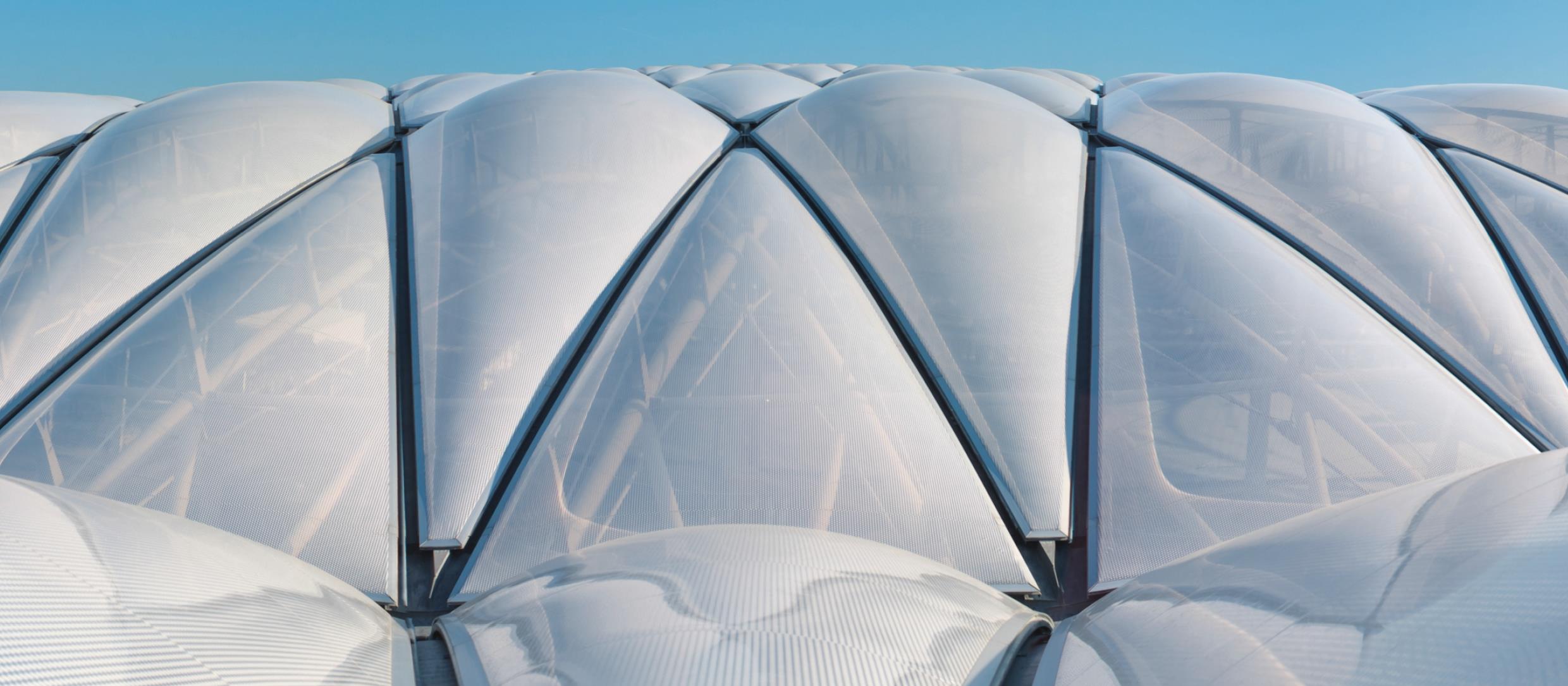
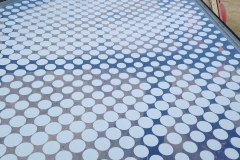

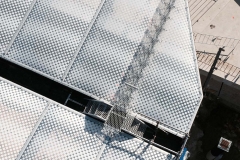
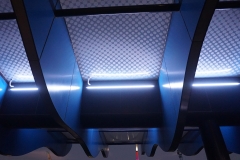
 Translate
Translate